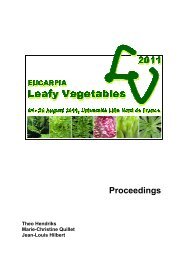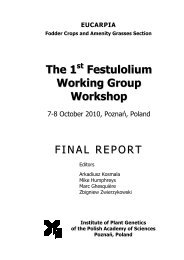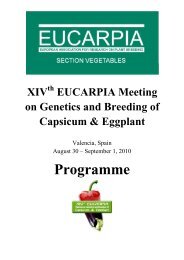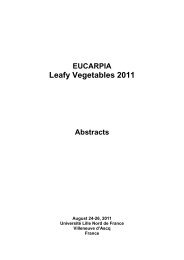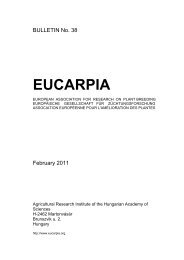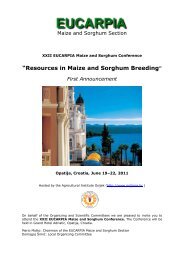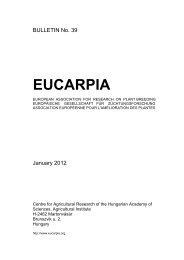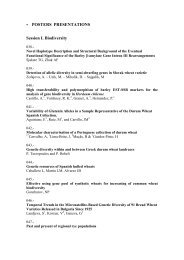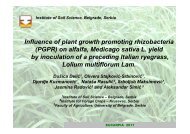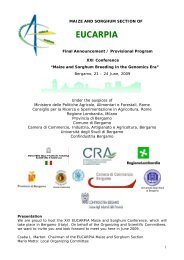Plant breeding for organic and sustainable, low-input agriculture
Plant breeding for organic and sustainable, low-input agriculture
Plant breeding for organic and sustainable, low-input agriculture
You also want an ePaper? Increase the reach of your titles
YUMPU automatically turns print PDFs into web optimized ePapers that Google loves.
Do we need a separate <strong>breeding</strong> program <strong>for</strong> <strong>organic</strong> soybeans?<br />
Michelle L. Menken, James Orf<br />
Department of Agronomy <strong>and</strong> <strong>Plant</strong> Genetics, University of Minnesota, USA<br />
Farmers often express the need <strong>for</strong> <strong>breeding</strong> programs to develop crops specifically adapted to<br />
<strong>organic</strong> farming conditions.<br />
We have designed an experiment to test whether this is true <strong>for</strong> food-grade soybeans. We will be<br />
growing 554 new <strong>breeding</strong> lines, divided into 12 tests based on maturity group, in five certified<br />
<strong>organic</strong> <strong>and</strong> five conventional environments in south central <strong>and</strong> southwestern Minnesota. The<br />
lines include small, medium <strong>and</strong> large-seeded types with high protein levels, uni<strong>for</strong>m seed size<br />
<strong>and</strong> shape, with higher yields suitable to the food grade market which were developed from<br />
crosses made between good food-grade lines, high-yielding lines <strong>and</strong> Minnesota adapted lines.<br />
The lines will be evaluated based on yield, seed size, protein <strong>and</strong> oil content, as well as on<br />
agronomic traits such as st<strong>and</strong>, lodging, canopy closure, <strong>and</strong> maturity date.<br />
Results from 2006 indicate that seed size <strong>and</strong> protein <strong>and</strong> oil levels are stable traits with levels in<br />
the conventional trial averaging >36% protein (at 13% moisture) <strong>and</strong> in the <strong>organic</strong> trial<br />
averaging >37% protein across all tests. Average yields <strong>for</strong> the 12 test in the conventional trial<br />
ranged from 2150 to 3360 kg/ha <strong>and</strong> from 1680 to 2352 kg/ha in the <strong>organic</strong> trial. Maximum<br />
yields ranged from 3629 to 5442 kg/ha in the conventional <strong>and</strong> from 3091 to 4099 kg/ha in the<br />
<strong>organic</strong> trial. A very preliminary analysis indicates that some lines per<strong>for</strong>m well in both systems<br />
<strong>and</strong> some lines per<strong>for</strong>m uniquely well in either the <strong>organic</strong> or the conventional system.<br />
The trials will continue in 2007 <strong>and</strong> 2008. If in the end we make different best selections in the<br />
two systems, it would indicate why we should have a separate <strong>breeding</strong> program to produce<br />
varieties <strong>for</strong> <strong>organic</strong> farmers. We also expect to find several high-yielding, high protein lines<br />
adapted to Minnesota growing conditions that could move on to further trials <strong>and</strong> possible future<br />
release.<br />
62




